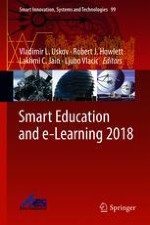2019 | OriginalPaper | Chapter
The Quality of Text-to-Voice and Voice-to-Text Software Systems for Smart Universities: Perceptions of College Students with Disabilities
Authors : Jeffrey P. Bakken, Vladimir L. Uskov, Narmada Rayala, Jitendra Syamala, Ashok Shah, Lavanya Aluri, Karnika Sharma
Published in: Smart Education and e-Learning 2018
Publisher: Springer International Publishing
Activate our intelligent search to find suitable subject content or patents.
Select sections of text to find matching patents with Artificial Intelligence. powered by
Select sections of text to find additional relevant content using AI-assisted search. powered by
